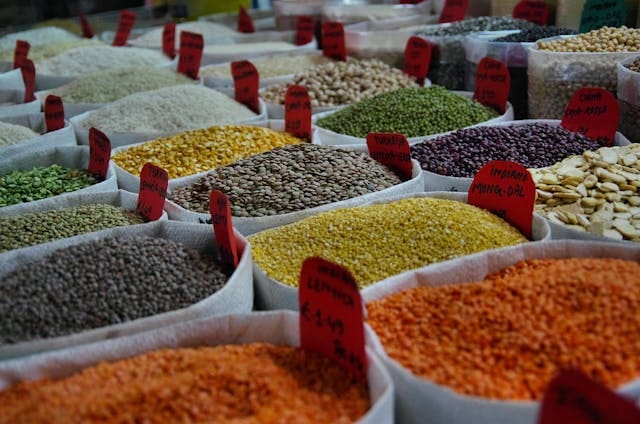In recent years, the gluten-free diet trend has captured the attention of health-conscious individuals. Amid this dietary shift, ancient grains are making a remarkable comeback in the culinary world. These grains not only offer unique flavors but also provide numerous nutritional benefits.
AncientGrains.com dedicates itself to promoting and selling ancient grains and flours, including spelt berries, whole grain einkorn flour and emmer berries. The site emphasizes organic farming and family-owned operations, offering educational content, recipes and various products for purchase. This perfectly aligns with the growing interest in ancient grains as a staple in gluten-free baking.
Baking continues to evolve as more people embrace gluten-free diets for health and lifestyle reasons. Ancient grains like amaranth, buckwheat and quinoa are gaining popularity for their ability to transform gluten-free recipes into nutritious delights.
As you explore these grains, you’ll discover diverse flavors and textures that elevate any baking creation. For those eager to explore further and view more recipes, these grains provide an excellent starting point.
Ancient Grains and Their Role in Gluten-Free Baking
Ancient grains such as amaranth, millet, sorghum and teff aren’t just culinary trends; they’re nutritional powerhouses. Amaranth stands out for its high protein content and nutty flavor, making it versatile in baked goods. Buckwheat, despite its name, is actually a seed related to rhubarb, providing a rich, earthy taste. Quinoa delivers complete protein with all nine essential amino acids, while teff offers high iron content and a subtle sweetness.
Each grain brings distinct flavors that transform ordinary gluten-free baked goods into extraordinary treats. Incorporating these grains into recipes allows for experimentation with different tastes and textures while maximizing health benefits. Moreover, these grains typically contain higher fiber content than modern wheat varieties, promoting digestive health.
Using Ancient Grains in Baking
Ancient grains integrate seamlessly into various recipes, from breads to pastries. Amaranth flour can substitute part of your usual flour blend in bread recipes, enhancing nutrients without compromising texture. Similarly, quinoa flour adds moisture and nutty notes to cookies and cakes.
Buckwheat’s robust flavor complements chocolate or warm spices like cinnamon and nutmeg. Sorghum flour provides excellent structure for gluten-free bread thanks to its binding properties. Experimenting with different flour combinations can yield exciting new creations.
For bakers interested in these ancient ingredients, quality sourcing is crucial. Websites like AncientGrains.com offer extensive selections of organic flours and whole grains perfect for baking projects.
Local Impact
Throughout New Jersey, bakeries are leading the way in using ancient grains for gluten-free products. These establishments craft artisanal breads and pastries highlighting these heritage ingredients’ unique qualities. Many host workshops teaching homebakers how to incorporate ancient grains into their recipes.
These events provide practical knowledge and connect enthusiasts who share a passion for healthy baking alternatives. Workshop participation can enhance skills and introduce new ancient grain recipes.
This growing workshop interest reflects a broader movement toward sustainable food practices and traditional crop appreciation. Choosing ancient grain products supports local economies while providing nutritious food options.
Practical Recipes and Tips
Starting with ancient grains needn’t be overwhelming; begin with simple, tested recipes. Try classic buckwheat pancakes to experience its distinctive flavor paired with maple syrup or fresh berries.
For sourdough enthusiasts, incorporating amaranth or quinoa flour into starters yields tangy loaves with enhanced nutrition. Sorghum flatbreads offer another easy option that pairs well with various toppings.
Source ingredients locally or through trusted online retailers to ensure quality. With practice and experimentation, you’ll master ancient grain baking techniques.
Final Thoughts
Ancient grains in gluten-free baking offer improved nutrition, unique flavors and support sustainable agriculture. Experimenting with these time-honored ingredients reveals exciting new dimensions in baking.
We encourage exploring this fascinating world through recommended recipes available online at sites dedicated to promoting ancient grain use among home bakers. Whether you’re experienced or just starting, these versatile ingredients always offer something new to discover.
The New Jersey Digest is a new jersey magazine that has chronicled daily life in the Garden State for over 10 years.
- Staffhttps://thedigestonline.com/author/thedigeststaff/
- Staffhttps://thedigestonline.com/author/thedigeststaff/
- Staffhttps://thedigestonline.com/author/thedigeststaff/
- Staffhttps://thedigestonline.com/author/thedigeststaff/


